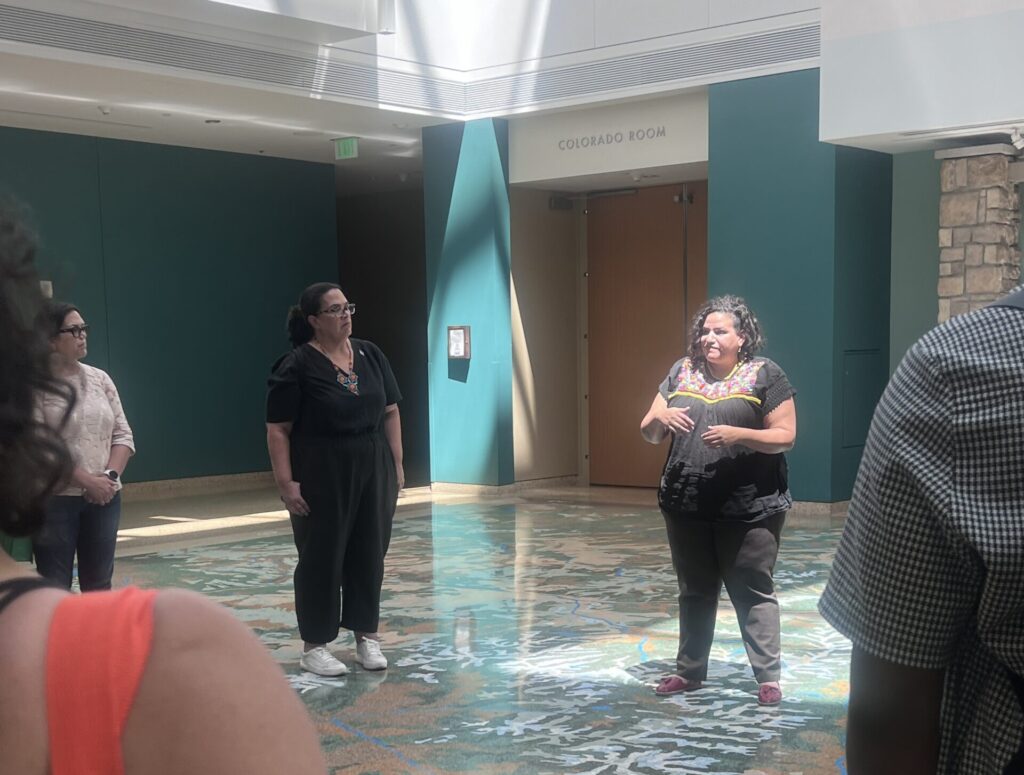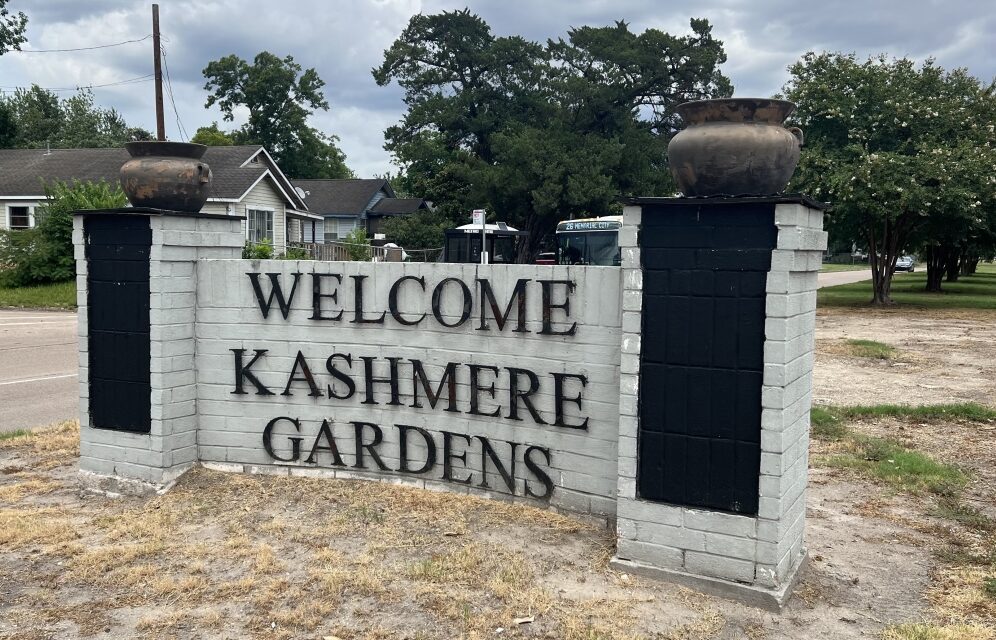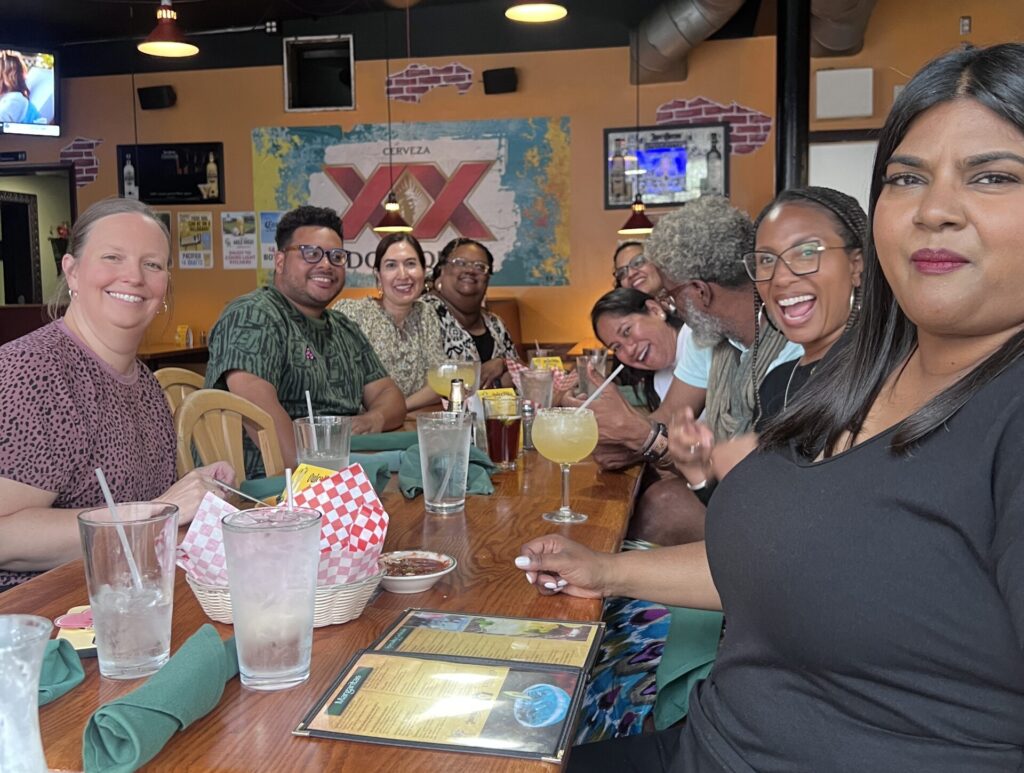BY Patrick Moreno-Covington, PLACES Fellow and Program Officer, Rockwell Fund
During TFN’s PLACES Fellowship, we understand that when we go on a site visit, Fellows are in for new experiences where we learn from and alongside dynamic funders, community organizers and nonprofit leaders who offer their own expertise about their communities. We pair what we thought we once knew with new information, context and possible application.
As I planned for our trip to Denver I was apprehensive about engaging with a city where I have my own conflicting history.
Going to college in Colorado Springs, Denver represented the big, dynamic city — an urban center of culture in the outdoorsy dream that is the rest of the state. In the summer of 2010, I was selected for a summer internship at a Denver-based think tank.
My experience that summer proved to be influential and instructive. While I learned a lot about the Colorado legislature and the expectations of nonprofit employees, it was the time biking around the city and attending concerts that proved to be the most influential. Despite the city’s quaint neighborhoods and well-appointed parks, certainly a friendly playground for bike rides and social outings, something did not feel right. While my roommates and college friends still had aspirations of a post-college life, I left Denver feeling like an outsider — that the city was not meant for me.
One thing about PLACES that I value is the importance placed on understanding the history and context of each site visit. As a former history student, connecting to the stories of these places and the stories that communities share about themselves can often be equally revealing.

Local guide and activist Celeste Martinez led PLACES Fellows on a tour of History Colorado during their Denver site visit. Photo credit: Patrick Moreno-Covington
On a visit to the History Colorado center — escorted by local guide and activist Celeste Martinez — we saw how the dual nature of place can be utilized by audiences. While History Colorado featured voices outside of the mainstream, including the rise of Latino activism in the state, the central narrative featured in the museum was one of pioneering, European descendants who moved to Colorado. They came in the hopes of striking it rich during the state’s gold rush but instead settled on the eastern plains. While the narrative acknowledged the presence of Indigenous people in the area, the centering of white settlers as intrepid pioneers who formed Denver into a thriving city reiterates a sanitized narrative free from the violence of colonialism. The descendants of Colorado’s white settlers and the later newcomers to the state would leave History Colorado’s main exhibit feeling part of a proud legacy of development.
That narrative stood in stark contrast to an exhibit just on the next floor that detailed the horrifying events of the Sand Creek Massacre. Using multimedia storytelling written and designed by contemporary and historic Cheyenne and Arapaho members, the exhibit told the story of how abrogated treaties between Indigenous tribes and the United States, fears of white settlers, and troops stationed to fight in the Civil War led to a massacre of an estimated 230 people, the majority of whom were women, children and the elderly.
The massacre accelerated the dispossession of Cheyenne and Arapaho people from their ancestral and sacred lands of Colorado’s eastern plains and ushered in a new era of unfettered white settlement that was celebrated just one floor below. The exhibit detailed not only the long-lasting pain of the violent massacre but also the hope, promise and ongoing connection that Cheyenne and Arapaho people continue to have to Sandy Creek.
The contradiction of these two histories’ connection to one place was emblematic of the rest of our visit to Denver.
This contradiction was present in speaking with Renee M. Chacon, a Flipina/Xicana who is also Diné, the Indigenous people native to the region. She works as an activist and healer, and is the co-founder of Womxn from the Mountain. Renee also sits on the city council of Commerce City, a few miles north of Denver. She led PLACES Fellows on a Diné healing exercise before introducing us to Commerce City — her home and the site of much of her organizing and activism. Commerce City is home to 1,400 companies, including the largest oil refinery in the Rocky Mountain region. She noted the longstanding fights between her majority Latinx neighbors and the heavy industry that has failed to be held accountable for polluting the community’s water and air.
We heard valuable lessons about her experience organizing at local and state levels. But beyond that, Renee’s passion and commitment to fighting for land that has so often poisoned her and her family reminded me of the Cheyenne and Arapaho voices committed to forging a future despite historic and ongoing injustices.
I once again left Denver to return home to Houston with many lessons learned and a commitment to use my experiences to make my community a stronger place. The timing of the Denver trip and my deep reflections on place couldn’t have been more relevant.

Image of Houston’s Kashmere Gardens neighborhood. Photo credit: Patrick Moreno-Covington
My organization, Rockwell Fund, is undergoing a strategic redesign that will focus on a specific neighborhood here in Houston rather than funding across Houston’s health, housing and education sectors. After extensive research, including conversations with grasstops and grassroots leaders, our foundation has decided to partner with residents in Houston’s Kashmere Gardens neighborhood to invest a minimum of $20 million over the next 10 years.
As I continued to learn and connect with organizations working on the ground in Kashmere, I kept returning to my time in Denver and the conversations with Renee, Celeste and my PLACES Fellows. For so long, Kashmere Gardens residents have been stigmatized and the neighborhood demonized as violent, unsafe and low-income. Those stigmas became a self-fulfilling prophecy as legacies of segregation, redlining and disinvestment had devastating impacts on the neighborhood. Heavy industry has resulted in numerous adverse health effects. Climate change has exacerbated natural disasters, further threatening already vulnerable residents — who were then systematically denied relief by state government. The people of Kashmere Gardens, just like the descendants of Sand Creek and the residents of Commerce City, have plenty of reasons to feel conflicted over the place they call home — and understand that its future is worth fighting for.
At PLACES we get to learn and grow together through discussions about how place and the stories tied to those places impact our work in philanthropy. Our time in Denver reminded me that the connections to our homes can be challenging and at times traumatic. But it also showed that in order for us to do this work, we have to craft a new, reimagined future with an honest foundation in our history.

PLACES Fellows enjoy a meal together during their Denver site visit. Photo credit: Patrick Moreno-Covington
About the Author

Patrick Moreno-Covington is a 2024 PLACES Fellow. He works as a program officer at the Rockwell Fund, a private foundation serving the Greater Houston area.
Featured image at top: ‘The Sand Creek Massacre,’ a painting on elk hide by Northern Arapaho artist Eugene J. Ridgely, Sr. (Eagle Robe), 1994. The artwork is on display at History Colorado in Denver.
